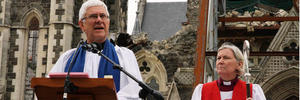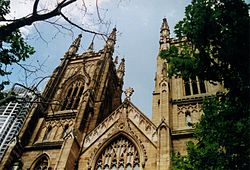The law relating to the duties and responsibilities of an architect and those of an owner employing an architect, a quantity surveyor, engineer or builder are well set out in English law and English case law going back past 1888.
It can be summed up with the following statements: (page 158)
1. That, when tenders are required from a number of builders for the erection of a building, it is essential that bills of quantities should be prepared, in order that each of them may make his tender on exactly the same basis.
2.
That, in the absence of special instructions to the contrary, it is the
duty of the architect to make the necessary arrangements for the
providing of such bills of quantities.
3.
That, for this purpose, the architect is the agent of his client, and
the client is bound by his acts, whether cognizant or not of them or of
the custom.
4. That, until a tender is accepted, the client is
liable to the surveyor so appointed by the architect for the amount of
his commission, and the expenses incurred.
On that understanding (the entire law relating to contracts and the responsibility of the architect to the owner), I am requesting from the Church (the Queen of England), a fee of 10% of the cost of the materials assessed by the quantity surveyor appointed by the architect employed by the Anglican Church in Christchurch city, to rebuild its cathedral.
Legal Precedent
One of the major problems in the early centuries was to produce a system that was certain in its operation and predictable in its outcomes. Too many judges were either partial or incompetent, acquiring their positions only by virtue of their rank in society. Thus, a standardised procedure slowly emerged, based on a system termed stare decisis. Thus, the ratio decidendi of each case will bind future cases on the same generic set of facts both horizontally and vertically. The highest appellate court in the UK is the Supreme Court of the United Kingdom and its decisions are binding on every other court in the hierarchy which are obliged to apply its rulings as the law of the land. The Court of Appeal binds the lower courts, and so on.
Overseas influences
The influences are two-way.
- The United Kingdom exported the English legal system to the Commonwealth countries during the British Empire, and many aspects of that system have persisted after the British withdrew or granted independence to former dominions. English law prior to the Wars of Independence is still an influence on United States law, and provides the basis for many American legal traditions and policies. Many states that were formerly subject to English law (such as Australia) continue to recognize a link to English law - subject, of course, to statutory modification and judicial revision to match the law to local conditions - and decisions from the English law reports continue to be cited from time to time as persuasive authority in present day judicial opinions. For a few states, the Judicial Committee of the Privy Council remains the ultimate court of appeal. Many jurisdictions which were formerly subject to English law (such as Hong Kong) continue to recognise the common law of England as their own - subject, of course, to statutory modification and judicial revision - and decisions from the English Reports continue to be cited from time to time as persuasive authority in present day judicial opinions.
- The UK is a dualist in its relationship with international law, i.e. international obligations have to be formally incorporated into English law before the courts are obliged to apply supranational laws. For example, the European Convention on Human Rights and Fundamental Freedoms was signed in 1950 and the UK allowed individuals to directly petition the European Commission on Human Rights from 1966. Now s6(1) Human Rights Act 1998 (HRA) makes it unlawful "... for a public authority to act in a way which is incompatible with a convention right", where a "public authority" is any person or body which exercises a public function, expressly including the courts but expressly excluding Parliament. Although the European Convention has begun to be applied to the acts of non-state agents, the HRA does not make the Convention specifically applicable between private parties. Courts have taken the Convention into account in interpreting the common law. They also must take the Convention into account in interpreting Acts of Parliament, but must ultimately follow the terms of the Act even if inconsistent with the Convention (s3 HRA).
- Similarly, because the UK remains a strong international trading nation, international consistency of decision making is of vital importance, so the Admiralty is strongly influenced by Public International Law and the modern commercial treaties and conventions regulating shipping. (Admiralty law)
Constitutional law
- Fundamental Laws of England
- Rights of Englishmen
- Constitution of the United Kingdom
St Andrew's Cathedral is the cathedral church of the Anglican Diocese of Sydney in the Anglican Church of Australia.

News Christchurch New Zealand
Following a 7.1 earthquake centred at Greendale, 38km north west of the
city on 4 Sep, 2010, a second quake centred on Christchurch’s CBD
caused massive damage on 22 Feb, 2011. The Cathedral suffered minor
damage on 4 Sep. 22 Feb was an entirely different story. The building
was devastated. The tower collapsed and the remaining building was
severely compromised.
ChristChurch Cathedral was deconsecrated on Wednesday November 9th in an
emotional ceremony. About 200 invited members of the cathedral
community gathered in Cathedral Square to see the earthquake-damaged
building returned to secular use. The ceremony opens the way for partial
demolition of the cathedral to make it safe while long term option...

